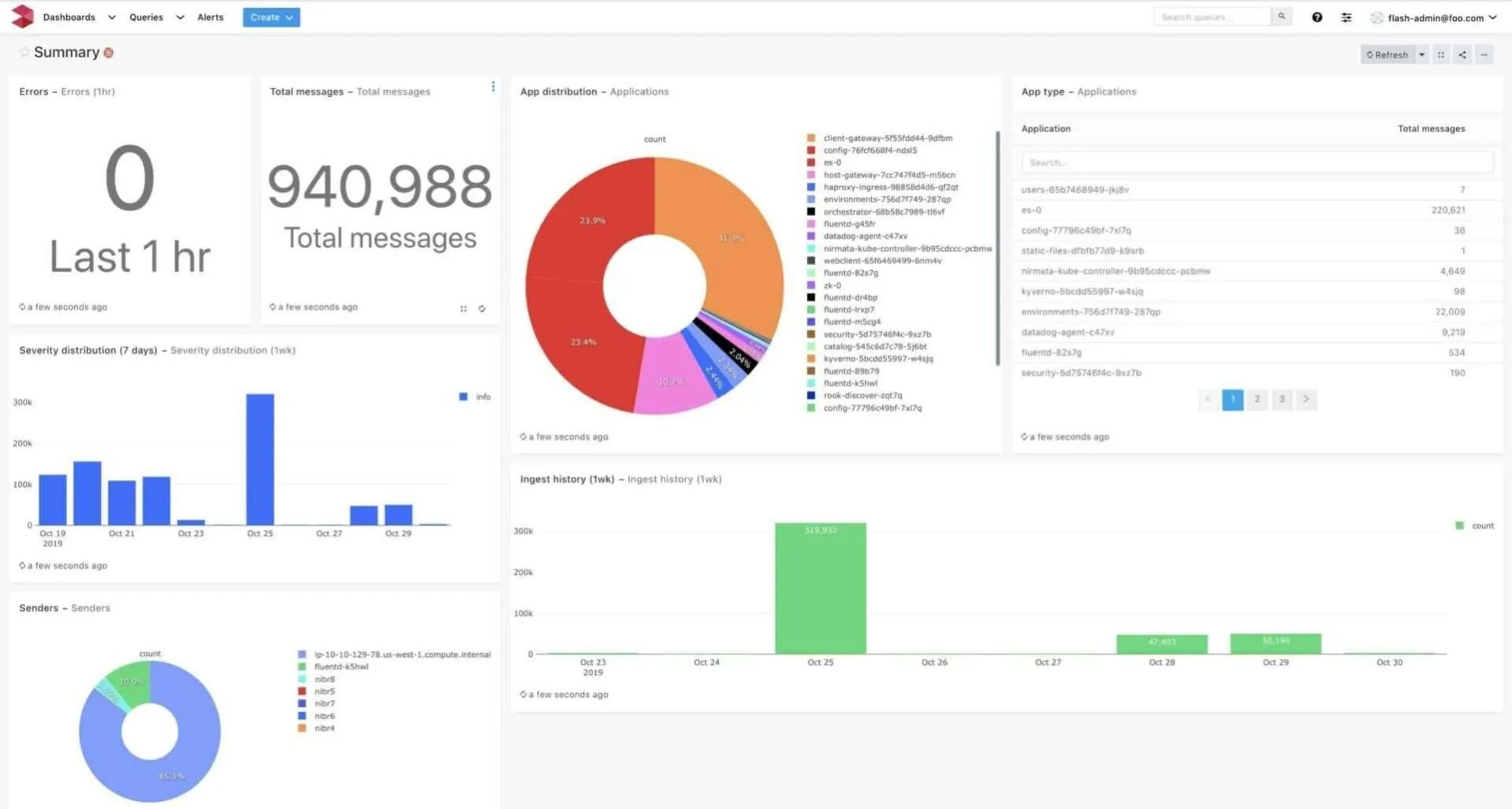New year, new log visualization tools for your DevOps team?
Right?
Wrong?
Did you find the tech-related pun funny, or at the very least smirk at your screen when you read it?
Probably not. Anyway, let’s move on to the important stuff.
Regardless of your sense of humor, now is the best time for your team to review your current logging technologies. If you’ve been using the same one for a while, it may be time to upgrade.
And you won’t be alone, either. As teams look for more cloud-based solutions to manage their DevOps, IDC predicts that the industry will be worth $1 trillion in three years.
But where do you start?
If only someone would put together a list of the best products for you and your team. An article that will help you improve your productivity plan better for the future and solve issues faster.
Maybe even one like the article you’ve clicked on? (Hint: it is the one you’ve clicked on).
Keep reading, and you’ll discover the best log analysis tools for your team to try in 2021.
apica.io
Founded in 2019, apica.io offers a broad range of logging analysis tools for DevOps professionals.
Using the platform, you can set up comprehensive monitoring for your cloud and app infrastructures. Moreover, you can create alerts that prompt you to take action whenever something has gone wrong or about to go wrong. You will also get 1 TB of log data at an industry-leading price of just $500/month.
apica.io also comes with an integrated user interface, making log data management and monitoring easier and better-laid out. The platform also enables you to incorporate logs from Openstack, Kubernetes, and other IaaS services.
On the apica.io website, you’ll also find a wide range of resources, such as blog posts, tutorials, and eBooks – to further expand your knowledge.
apica.io costs $500 monthly, which works out to $0.05 per GB of log data. The price includes unlimited logging events, as well as 60 days of free retention and more.
Datadog
Datadog was founded in 2010, with headquarters in New York City. As well as logging, the platform also enables teams to look at analytics and other features.
Users can use the service to find all of their logs in a single interface. Moreover, the platform can help DevOps teams deal with outages that may happen across the globe.
Various data related to web and app traffic is also available.
Datadog users can begin with a free 14-day trial. After that, there are three separate categories. Besides the free version, Pro costs $15 per host per month. Enterprise is $23 per host per month.
Dynatrace
Dynatrace is a cloud monitoring platform founded in 2005. Since its beginnings in Linz, Austria, the company has set up its headquarters in Waltham, Massachusetts.
Dynatrace offers team members a wide range of log visualization tools and data. The platform also has business analytics and allows DevOps managers to analyze their apps’ performances. Digital experience monitoring is also possible.
Like Datadog, Dynatrace comes with a free trial. Beyond that, there are three different pricing categories.
Digital Experience Monitoring costs $11 per month, with Infrastructure Monitoring priced at $21 and Active Monitoring costing $69 monthly.
Logz.io
Logz.io has been in the log analysis tools scene since 2014. The company has over 200 employees and has a head office in Tel Aviv, Israel.
The Logz.io platform has a range of log visualization tools, such as app insights and ELK Stack-based log management solutions.
Users can also set up alerts if they suffer system outages and Jaeger-based distributed tracing.
Logz.io also has security and DevOps analytics solutions, plus monitoring tools for each of your business’ apps.
Users can index up to 1 GB of log data for free. The Pro option has plan customization possibilities for 3-45 days’ retention. Prices similarly vary.
Three days’ retention costs $0.98 per indexed GB, starting at 2GB per day, up to $2.13 for 45 days’ retention.
Graylog
Graylog operates from Houston, Texas. The platform was founded in the rainy German city of Hamburg in 2009. Its primary offerings are a range of log analysis tools.
Users have access to numerous features, including alerts and compliance. The tool serves multiple industries and job functions, such as government, compliance and audit, telecom, fintech, and education.
DevOps teams can also use Graylog to look over their app performance, along with identifying security breaches. A wide range of data options is also available.
Graylog is available in two different packages: Open Source and Enterprise. For Enterprise, a free trial is available. Pricing depends on how much logging you need each day.
Companies that use under a certain amount can access Enterprise for free.
Google Cloud Logging
Google Cloud Logging is a service available for DevOps teams using certain google cloud services. Looking at the features alone, it’s one of the best free log visualization tools on the market.
Features of Google Cloud Logging include importing custom log data, as well as real-time analysis. Teams can also use the platform to carry out audits and report problems that may arise.
A wide range of third-party integrations is also available. The service is also available in various languages, including English, German, Dutch and Korean.
Users can get started with Google Cloud Logging for free. After a certain level of usage, you pay as per usage.
Scalyr
Scalyr is from San Mateo, California. The service was founded in 2011 by Steve Newman – the same person who brought the world what we now call Google Docs. He came up with the idea for Scalyr while working for the tech giant in the Sunshine State.
Scalyr offers a wide range of app architecture and log visualization tools. Users will discover a user-friendly interface, as well as features to monitor in case problems arise. Data is also available soon after collection.
DevOps teams will also find that the platform offers comprehensive data for all events that take place. Moreover, you can integrate various data tools – including Fluentd (more on them later) and Logstash.
Scalyr’s pricing depends on how much you will log. Retention from 7-30 days is available, with negotiable plans also available. You can choose packages from 1GB of data logging to 1PB.
LOGalyze
Like Fluentd, LOGalyze is an open-source management tool. The platform is a project of ZURIEL, headquartered in Budapest, Hungary.
LOGalyze allows DevOps teams to uncover events as they happen and break down their searches within multiple categories. LOGalyze supports various systems, including Windows, Linux, and OS.
Logging customization is also available for both native and custom apps.
Users can also analyze their logging data by correlating trends, understanding patterns, and individual event management. You can also tag each event and create separate categories.
LOGalyze is free to use. But you can also donate using VISA, PayPal, and other payment methods.
Now You Know the Best Log Visualization Tools for 2021
With so many log visualization tools available, knowing which one is best for you can be challenging. Besides the free options, you also need to look at paid versions and decide which features you will and will not use.
When looking for a logging analysis platform, you should consider how much data you’ll need now. But it would help if you also thought about which tools are scalable.
If you don’t, you will have to relearn everything on a new platform. This, in the long run, will waste a lot of time. Now you know what the best log visualization tools are, why not read more about how you can make your DevOps management much easier on our blog?


